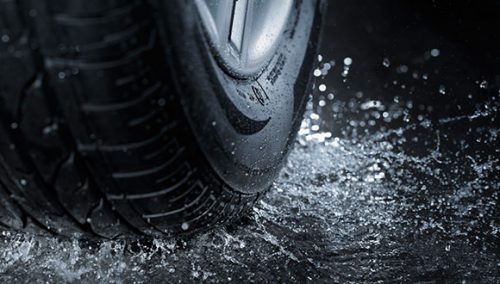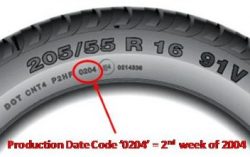
Part One of Three:
Driving Practices to Avoid Hydroplaning
1. Be careful during the first few minutes of rainfall. Those first ten or so minutes after it starts to rain can be the most dangerous. This is because when rain first begins to fall, it stirs up oil and other substances that have dried on the road. The mixture or oil and water forms a film on the road that makes it extra slippery. During those first few minutes, drive more slowly and be on high alert for other drivers skidding.Heavy downpour over an extended period of time will eventually wash the roads clean, so conditions might be a little less dangerous at that point.
2. Slow down in wet conditions. The faster you’re going, the harder it is for your car to maintain traction in wet conditions. If your tires connect with a puddle of standing water, instead of maintaining contact with the road, they’ll be more likely to skid. That’s why it’s important to slow down in wet conditions, even if visibility is fine.It’s fine to go under the speed limit if the roads are wet. Don’t go slower than the flow of traffic, but don’t feel you have to go 70 mph (110 km/h) on the highway during a downpour.It’s especially important to go slowly if you see standing water.
3. Avoid driving through puddles and standing water. These are the spots where you’ll be most likely to hydroplane, since your tires will have difficulty maintaining traction. They aren’t always easy to see, so be extra cautious (and drive a little slower) when enough rain has fallen to start collecting in puddles. Puddles are most likely to form along the sides of the road, so try to stay in the center of the lane.[1]Try to drive in the tire tracks left by the cars in front of you. This decreases the chance that water will build up in front of your tires and cause you to lose control of your car.Make sure your windshield wipers are working properly. Poor visibility during rainfall leads to more accidents in part because it’s difficult to see puddles through a wet windshield.
4. Turn off cruise control. If you’re driving on the highway and using cruise control, turn it off when it starts to rain. You’ll be more in tune with the conditions around you when it’s off. You may need to reduce your speed quickly, and that’s easier to do when your foot is already on the brake and you’re paying careful attention to the road conditions and your speed.
5. Consider driving in a lower gear. This enables you to maintain traction more easily and will prevent you from going too fast.[2] While it’s not necessarily possible to do if you’re on a highway, if you’re on a road with a lower speed limit driving in a lower gear can help you safely take treacherous turns or drive down hills without hydroplaning.
6. Drive slowly and carefully to avoid skids, and maintain a mild pressure on your brake and gas. If you have to brake, do so in gentle pumps; if your car has anti-lock brakes, then you can brake normally. Make sure that you don’t lock the wheels, which will throw your car into a skid.Avoid sudden acceleration and braking. Don’t make sudden turns, as these could throw your car off-course.Be extra cautious on curvy roads, taking care to steer smoothly and to drive slowly.











